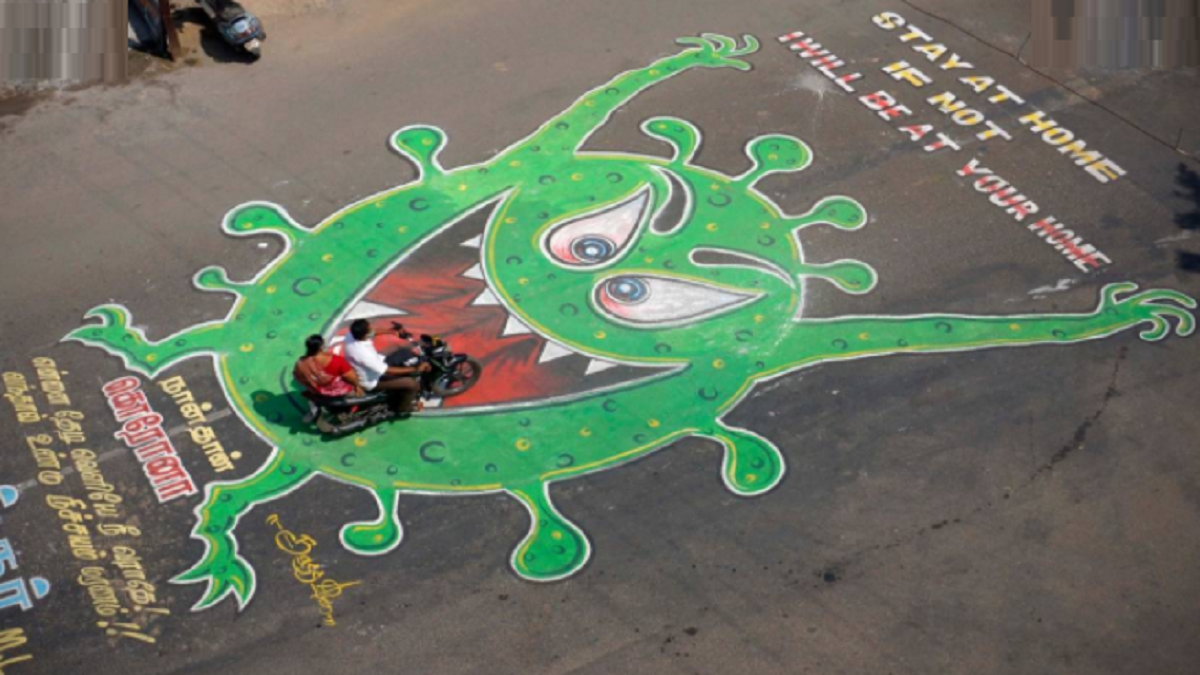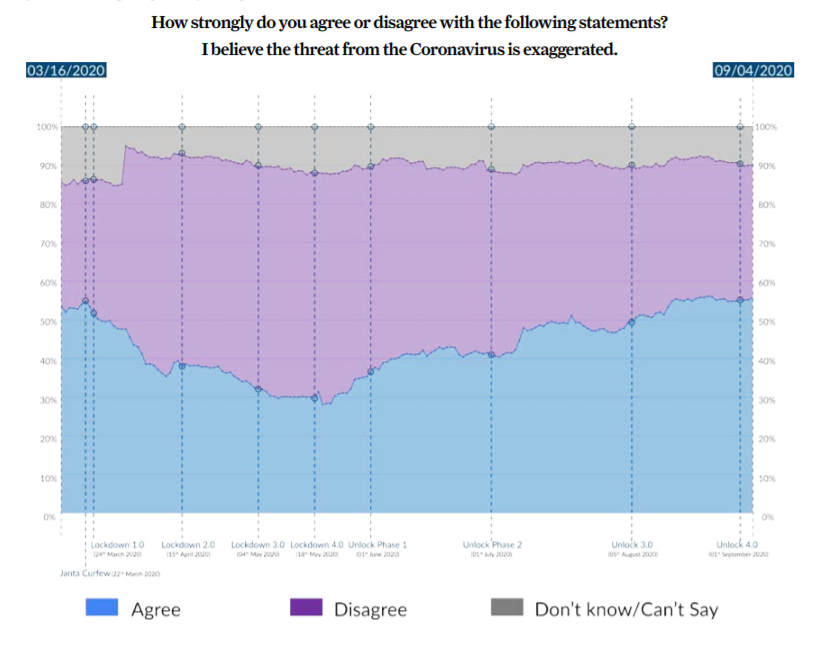
India continues to deal with the financial, economic and social impact of Covid-19 even as the economy is opening up households and individuals are still struggling with the impact of the pandemic on their jobs, mental health, loss of loved ones and living under constant fear of the dreaded virus. The Janta Curfew and subsequent lockdown were announced on 22 March when there were 361 positive coronavirus cases in the country. On 7 September, almost six months later, India is the second most affected country in the world with 4.2 million positive cases.
In an attempt to capture the country’s sentiment on the coronavirus crisis, Team C-Voter has been conducting a daily tracking poll from 16 March 2020 among 18+ adults statewide, including every major demographic. The poll asks questions to respondents across the country about their opinion on the fear of the virus, government’s handling of the crisis and availability of food and ration in the households.
We will attempt to see how public perception about the virus and its impact has changed over the past 6 months.
The Team C-Voter Covid-19 tracker asks respondents about whether they fear they or someone else in their family might catch the Coronavirus. Before the announcement of the lockdown on 22 March 2020, only around 35% of Indians feared that they or someone else in their family might catch the coronavirus. However, after the announcement of the lockdown, this percentage began to rise.
Throughout the lockdown period in April and May (till 18 May), the percentage of respondents who thought they or someone in their family could catch the Coronavirus remained steady at around 40-45%.
Since the announcement of Lockdown 4.0 on 18 May with relaxations and the subsequent unlock phase 1 announced from 1 June, we observe the percentage of respondents who think they or someone in their family could catch the Coronavirus has been increasing.
Throughout the various phases of Unlock 1.0 and Unlock 2.0, the percentage of respondents who thought they or someone in their family could catch the Coronavirus continued increasing, stabilizing at around 60%.
Subsequently, since the announcement of Unlock 3.0 and Unlock 4.0 in August and September, the percentage has declined slightly.
The percentage of Indians who believed they or someone in their family could catch the coronavirus was highest in the month of July. The country recorded more coronavirus cases in the month of July more than in all previous months put together.

In order to carry out the survey, Team CVoter uses Computer Assisted Telephone Interviewing (CATI) technology. This is an interactive front-end computer system that aids interviewers to ask questions over the telephone. Due to the Coronavirus lockdown implemented in the country, Team C-Voter decentralized the entire CATI process to enable all researchers to carry out interviews from their homes.

The survey is run in 11 national languages including Hindi, Punjabi, Gujarati, Marathi, Kannada, Malayalam, Tamil, Telugu, Oriya, Bangla and Asamiya. This enables the survey to cater to the local language requirements of the survey in urban as well as rural parts of the country. The Team C-Voter Corona Tracker is the only CATI survey that is being conducted routinely in all of South/South East Asia even during the COVID crisis.
India has a very high rate of teledensity, with the world’s second-largest mobile phone user base of over 1.16 billion users as of May 2019. India’s national numbering format is 10-digit for both landline phone as well as cellular phone services.
In order to ensure no particular section of the universe is left out:
• Firstly, a list of existing telecom circles of the area is made.
• After this, the first five prescribed digits of all the specified circles are used and then they are extended by five digits randomly.
• This creates a list of a large number of possible telephone numbers in an area, which are then randomly selected and dialled.
• Finally, researchers sitting on the system start the process as soon as a call is connected.


Until the announcement of the first lockdown, more than half Indians believed that the threat from the virus was being exaggerated.
Throughout the month of May (till before Lockdown 4.0) the percentage of Indians who thought the threat of the Coronavirus was being exaggerated was stable at around 30%. However, since the announcements of the various phases of unlocking since June, the percentage of Indians who think the threat is being exaggerated has been increasing.
It should be noted that in the month of September, while the country has recorded the second-highest number of cases of coronavirus in the world, around 55% of respondents said they think the threat from the virus was being exaggerated. These figures are even higher than those reported pre-lockdown |in March.


Overall, Indians have had a very positive response to the government’s handling of the Coronavirus crisis. In the days leading up to the Janta Curfew on March 22nd, around 75% of Indians believed that the government was handling the Coronavirus crisis well. After the announcement of the first nation-wide lockdown on 24 March, this figure began to increase gradually. However, it wasn’t until the first few days of April that over 93% of the respondents said that they thought the government was doing a good job in handling the crisis. This high approval rating continued until the end of May.
Since the announcement of the opening-up of the economy and the subsequent announcement of the unlock phases in June, the percentage of those who agree with the government’s handling of the Coronavirus crisis reduced slightly and stabilized at around 80% in the months of July-September.

